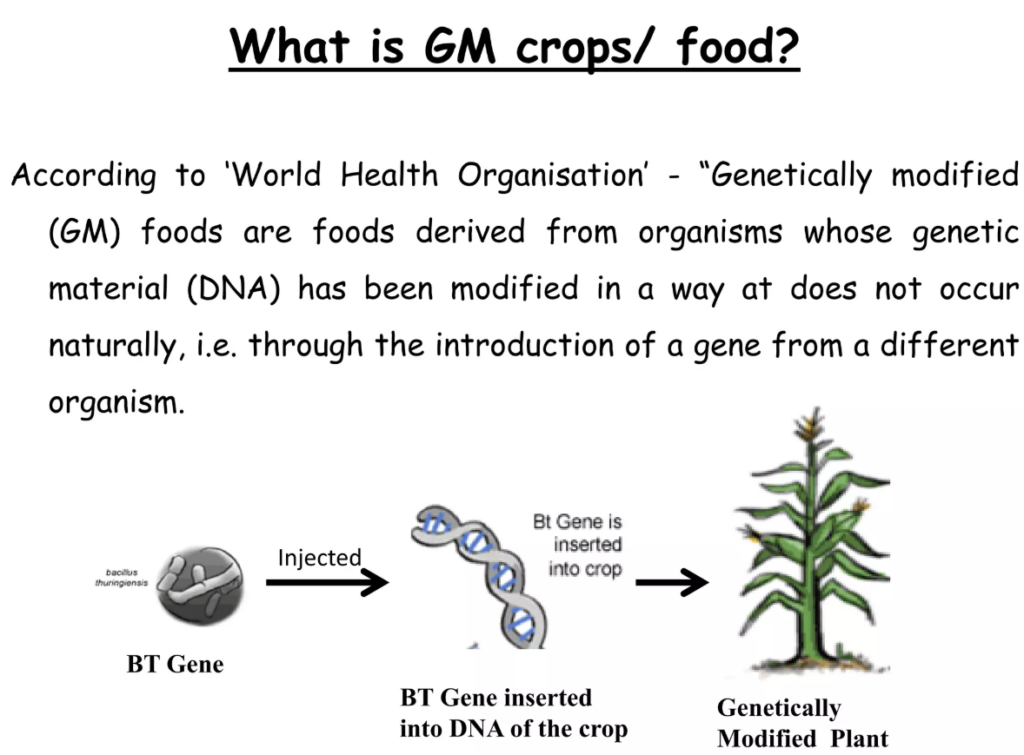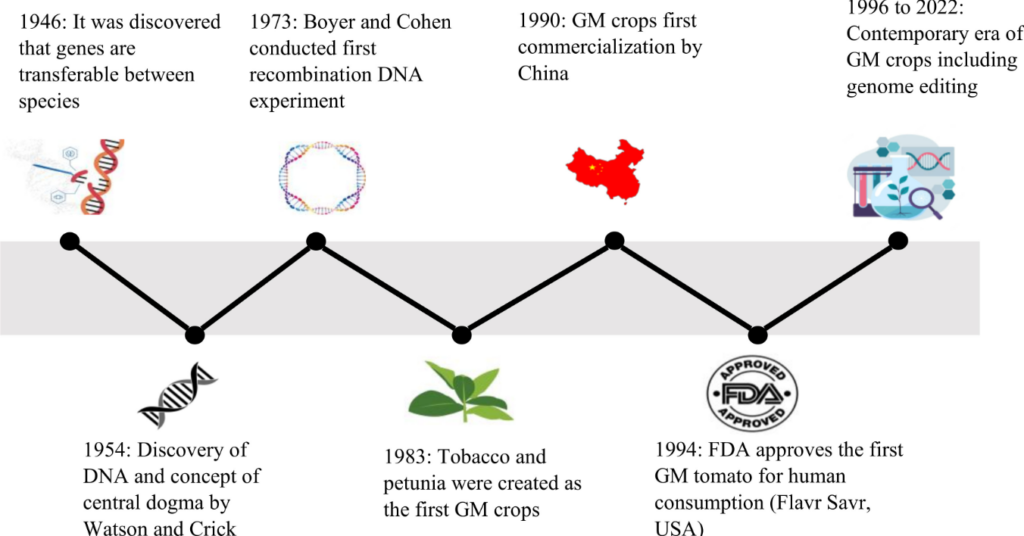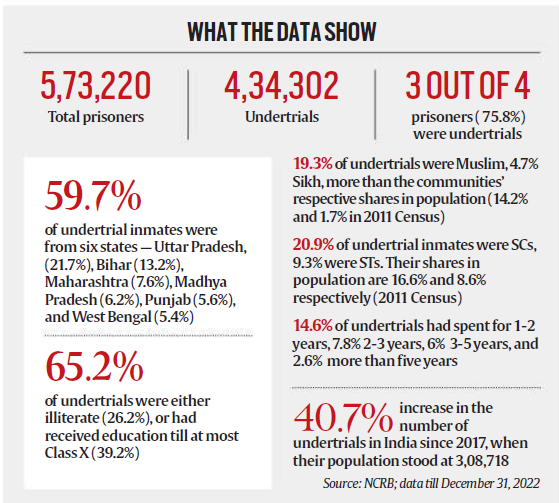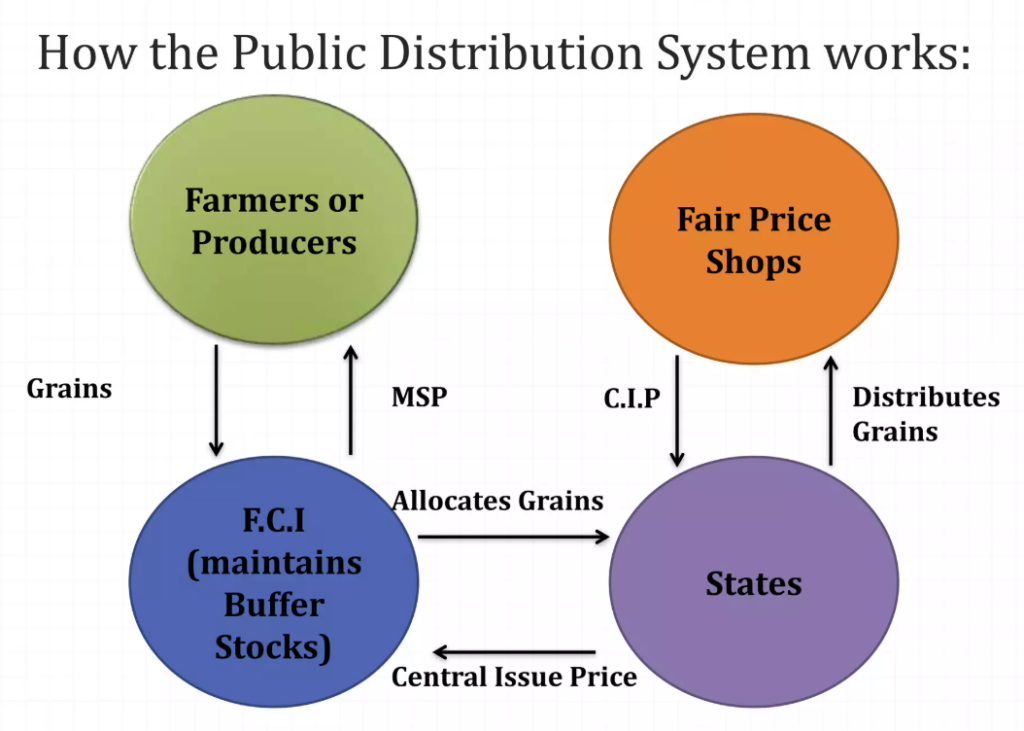21 November 2024 : Daily Current Affairs
1. Climate change is the biggest disruptor in aquaculture: FAO
- 1. Climate change is the biggest disruptor in aquaculture: FAO
- 2. Planetary crisis puts children at risk: UNICEF report
- 3. GM crops can help fight hunger depending on farming method
- 4. How does PM Vidyalaxmi differ from other schemes?
- 5. Addressing Undertrial Incarceration: Relaxed Bail Norms Under BNSS and Supreme Court’s Push for Reform
- 6. India and Australia Forge Stronger Ties with Renewable Energy Partnership and Enhanced Economic Cooperation
- 7. Modi first Indian PM to visit Guyana in 56 years, signs 10 pacts to expand ties
- 8. Centre committed to efficient and transparent Public Distribution System
- Prelims Facts
- 1. Prime Minister proposes seven key pillars to strengthen ties between India, ‘CARICOM’
- 2. Every Child Matters: Advocating for Adoption
- 3. Goa Hosts 18th Decennial Exposition of St. Francis Xavier’s Sacred Relics: A Global Spiritual Gathering
(Source – The Hindu, International Edition – Page No. – 4)
| Context |
|
Impact of Climate Change on Fisheries
- Oceans will produce less fish due to climate change, altering the composition of fish catches.
- India must adapt to these changes to sustain its aquaculture and fishing sectors.
Recommendations by FAO
- Diversification: It advocates for marketing alternative fish varieties to consumers, helping shift away from traditional species.
- Support for MSMEs: FAO calls for policy measures to aid micro, small, and medium enterprises (MSMEs) in the blue economy to ensure they remain competitive.
- Sustainable Practices: Emphasises the importance of sustainable aquaculture practices to balance growth with environmental concerns.
- Research and Innovation: FAO encourages innovation in fish farming techniques, including adapting fishing gear to improve efficiency and reduce environmental impact.
Growth Potential of Aquaculture
- Fastest Growing Sector: Aquaculture is the fastest-growing food production system globally, surpassing traditional agriculture and fisheries.
- India’s Lead in Growth: India’s aquaculture growth rate exceeds the global average, demonstrating significant potential in expanding production.
- Job Creation: Aquaculture has the potential to provide jobs and livelihood opportunities, especially for coastal and rural communities.
- Food Security: As global demand for protein rises, aquaculture can meet future food security needs while reducing reliance on wild fisheries.
- Technological Advancements: Continued innovation in farming techniques and sustainable practices can further enhance production efficiency and minimise environmental impact.
Focus on Sustainability and Equity
- Emphasise sustainable and equitable growth in the aquaculture sector to realise its full potential.
- Adaptation is critical to ensure long-term benefits for the industry and communities.
| Practice Question: Discuss the impact of climate change on India’s aquaculture and fisheries sector. What adaptive measures and policy interventions are needed to ensure sustainable and equitable growth in the blue economy? (150 Words /10 marks) |
2. Planetary crisis puts children at risk: UNICEF report
(Source – The Hindu, International Edition – Page No. – 6)
|
Unprecedented Planetary Crisis for Children
- Nearly one billion children, or half the global child population, live in countries facing high risks of climate and environmental hazards.
- The report highlights the triple impact of demographic shifts, climate crises, and frontier technologies on children by 2050.
Climate and Environmental Risks
- Children face climate destabilisation, biodiversity collapse, and pollution threats, creating a hazardous and unpredictable environment.
- Children’s developing bodies are uniquely susceptible to pollution and extreme weather impacts, leading to lifelong health issues.

Health and Well-being Threats
- Air pollution significantly affects children’s respiratory health and development.
- Rising temperatures increase the spread of diseases like malaria, dengue, and Zika.
- Floods contaminate water supplies, causing waterborne diseases, a major killer of children under five.
- Extreme weather disrupts food production, increasing risks of food insecurity and malnutrition.
Education and Displacement
- Since 2022, 400 million students have faced school closures due to extreme weather, violating child rights and stifling economic growth.
- Climate-related disasters displace children, causing trauma, helplessness, and anxiety.
Demographic Shifts
- By 2050, the child population will stabilise at 2.3 billion, with growth concentrated in South Asia and Africa, regions already vulnerable to climate risks and poor digital infrastructure.
Frontier Technologies
- Technologies like AI, renewable energy, and vaccine breakthroughs offer opportunities to improve childhood but pose risks like digital exclusion and online abuse.
- While 95% of high-income populations are online, only 26% in low-income countries have Internet access, deepening inequalities.
| Practice Question: Discuss the challenges posed by climate change and environmental hazards on children’s health and education globally. How can emerging technologies help mitigate these challenges while addressing digital inequalities? (250 Words /15 marks) |
3. GM crops can help fight hunger depending on farming method
(Source – The Hindu, International Edition – Page No. – 7)
| Topic: GS3 – Science and Technology |
| Context |
|

The Growing Need for Food and Sustainable Agriculture
- With a rising global population, the demand for food has increased, but expanding agricultural land unsustainably harms ecosystems.
- Practices such as deforestation and excessive pesticide use deplete soils, groundwater, and biodiversity.
- Genetically Modified (GM) crops offer a potential solution by increasing food production sustainably.
| How GM Crops Work |
|
Benefits of GM Crops
- Bt crops have reduced insecticide usage, improving farmer safety and lowering environmental toxicity.
- HT crops support no-till farming, reducing soil carbon release and improving carbon sequestration.
- GM crops can also be modified to improve yields and nutritional content.
Challenges and Risks
- Pests and weeds can develop resistance to Bt toxins and herbicides over time, requiring diversified strategies.
- Increased herbicide use, particularly glyphosate, has raised concerns about toxicity and environmental harm.
- Overuse of specific herbicides is analogous to antibiotic resistance in medicine.
The Role of Regulation and Technology
- Regulation of GM crops is prohibitively expensive, limiting entry for smaller players and public institutions.
- Emerging technologies like CRISPR can lower development costs but remain constrained by regulatory hurdles.
Broader Environmental Impact
- Evidence on GM crops’ effects on biodiversity is limited and often influenced by industry-sponsored research.
- Habitat loss, urbanisation, and climate change also contribute to declining biodiversity, complicating attribution to GM farming.
Integrated Pest Management
- Experts suggest a balanced approach with evidence-based pest management practices, avoiding excessive herbicide reliance.
- Crop rotation and allowing minimal weed presence can reduce resistance and agro-chemical dependence.
Conclusion
- While GM crops enhance agricultural efficiency, their development, regulation, and environmental effects require balanced consideration.
- Addressing global food needs sustainably demands innovative, inclusive, and precautionary agricultural practices.

| Practice Question: Discuss the role of genetically modified (GM) crops in ensuring global food security. Analyse the challenges associated with their environmental impact and regulatory frameworks. (250 Words /15 marks) |
4. How does PM Vidyalaxmi differ from other schemes?
(Source – The Hindu, International Edition – Page No. – 10)
| Topic: GS2 – Governance |
| Context |
|

Introduction to PM Vidyalaxmi Scheme
- The Union Cabinet approved PM Vidyalaxmi, a Central Sector Scheme, on November 6 to provide financial support for higher education.
- Students can avail of collateral-free, guarantor-free loans to cover tuition fees and related expenses.
| Scheme Coverage |
|
Comparison with Past Schemes
- Vidyalaxmi extends benefits to middle-income families and simplifies loan applications via the Vidyalaxmi portal.
- Unlike past schemes, which relied on NAAC and NBA accreditation, it focuses on NIRF rankings.
Pros of the PM Vidyalaxmi Scheme
- Increased Access to Education: The scheme ensures financial support for meritorious students from middle-income families, broadening educational opportunities.
- Streamlined Loan Process: The Vidyalaxmi portal simplifies application, approval, and tracking, enhancing transparency and ease for students.
- Support for Top Institutions: By focusing on NIRF-ranked institutions, the scheme encourages quality education and prioritises merit-based opportunities.
Cons of the PM Vidyalaxmi Scheme
- Limited Coverage: The scheme restricts eligibility to NIRF-ranked institutions, excluding students from non-ranked or lesser-known institutions, potentially creating inequality.
- Intensified Competition: With a focus on top-ranked colleges, it increases pressure on students to excel in entrance exams, limiting opportunities for those with average academic performance.
- Potential for Higher Interest: Banks may charge higher interest for loans related to lower-ranked institutions, making financing more expensive for some students.
| Practice Question: Discuss the potential benefits and challenges of the PM Vidyalaxmi scheme in improving access to higher education while ensuring equity among students from different socioeconomic backgrounds. (150 Words /10 marks) |
5. Addressing Undertrial Incarceration: Relaxed Bail Norms Under BNSS and Supreme Court’s Push for Reform
(Source: Indian Express; Section: Explained; Page: 19)
| Topic: GS2 – Polity |
| Context: |
|
Analysis of News:
Section 479 of BNSS: Key Provisions
Section 479 of the BNSS aims to limit the maximum period undertrials can be detained without bail:
- General Rule: Accused persons not charged with offences punishable by death or life imprisonment must be granted bail if they have served half of the maximum sentence.
- First-Time Offenders: For individuals with no prior convictions, bail is mandated after serving one-third of the maximum sentence.
- Exceptions: The provision does not apply if there are pending cases against the accused or multiple charges for related offences.
This provision builds on Section 436A of the CrPC but introduces relaxed standards for first-time offenders, ensuring quicker justice.
Supreme Court’s Role in Implementation
The Supreme Court has actively addressed the plight of undertrials through directives in the case In re: Inhuman conditions in 1382 prisons:
- Retrospective Application: The Court ruled that Section 479 of the BNSS would apply retrospectively to first-time offenders.
- Mandatory Reporting: Jail superintendents must identify eligible prisoners and submit applications to courts for bail.
- Compliance Monitoring: States and Union Territories have been tasked with reporting progress, though many have been slow to comply.
These efforts underscore the Court’s proactive stance in mitigating prison overcrowding.
State of Undertrial Prisoners in India

Undertrials constitute a significant majority of the incarcerated population in India:
- Statistics: As of December 2022, 75.8% of prisoners were undertrials, with 8.6% having been imprisoned for over three years.
- Gender Disparity: Among women prisoners, 76.33% were undertrials.
- Challenges: The lack of comprehensive data on first-time offenders complicates efforts to implement Section 479 effectively.
The over-reliance on pre-trial detention highlights systemic inefficiencies in India’s judicial and penal systems.
Conclusion: Towards Justice and Reform
- The relaxed bail provisions under Section 479 of the BNSS are a step forward in ensuring timely justice for undertrials and reducing prison overcrowding.
- However, effective implementation demands rigorous monitoring, better compliance from state authorities, and systemic reforms to address delays in the judicial process.
- These efforts align with the broader goal of upholding constitutional values of justice and fairness.
| Why are there so many undertrial prisoners in India? |
|
Several factors contribute to the high number of undertrial prisoners in India: Slow Judicial Process: The Indian judicial system is burdened with a huge backlog of cases, leading to long delays in trials. Overuse of Preventive Detention: Authorities often use preventive detention laws to keep individuals in jail without trial for extended periods. Lack of Legal Aid: Many undertrial prisoners are from marginalized communities and lack access to legal representation, making it difficult to navigate the legal system. Overcrowded Jails: Prisons in India are often overcrowded, with limited resources, making it difficult to expedite trials and provide adequate facilities. |
| PYQ: With reference to India, consider the following statements: (2021) 1) When a prisoner makes out a sufficient case, parole cannot be denied to such prisoner because it becomes a matter of his/her right. 2) State Governments have their own Prisoners Release on Parole Rules. Which of the statements given above is/are correct? (a) 1 only (b) 2 only (c) Both 1 and 2 (d) Neither I nor 2 Ans: (b) |
| Practice Question: Discuss the significance of Section 479 of the Bharatiya Nagarik Suraksha Sanhita (BNSS), 2023, in addressing the issue of undertrial prisoners in India. Highlight the challenges in its implementation and suggest measures to ensure timely justice and prison reforms. (250 words/15 m) |
6. India and Australia Forge Stronger Ties with Renewable Energy Partnership and Enhanced Economic Cooperation
(Source: Indian Express; Section: Govt & Politics; Page: 08)
| Context: |
| The meeting between Prime Ministers Narendra Modi and Anthony Albanese on the sidelines of the G20 Summit in Brazil marked a significant step in strengthening India-Australia relations across multiple sectors, including renewable energy, defence, trade, and regional security. |
Analysis of News:
Renewable Energy Partnership (REP)
The launch of the Renewable Energy Partnership provides a framework for cooperation in:
- Solar Energy, Green Hydrogen, and Energy Storage: Joint projects to enhance sustainable energy solutions.
- Investment Opportunities: Boosting allied industries and fostering economic growth.
This partnership aligns with global goals for combating climate change while unlocking economic benefits.
Economic and Trade Cooperation
Building on the Economic Cooperation and Trade Agreement (ECTA) signed in 2022, the leaders emphasized:
- Comprehensive Economic Cooperation Agreement (CECA): Aiming for a balanced and mutually beneficial deal to strengthen bilateral trade further.
- Trade Growth: Post-ECTA, mutual trade increased by 40% in two years.
- Complementarity in Economic Visions: The synergy between “Make in India” and “Future Made in Australia” to create jobs and drive economic growth.
Defence and Security Collaboration
The leaders reaffirmed their commitment to:
- Joint Defence Declaration Renewal (2025): To reflect the growing strategic convergence between the two nations.
- Indo-Pacific Security: Supporting peace, stability, and prosperity in the region, emphasizing dialogue and diplomacy to resolve conflicts.
Broader Collaboration
Other areas of cooperation included:
- Education and Mobility: Protecting the interests of the Indian community and students in Australia.
- Science, Technology, and Space: Joint initiatives in emerging sectors to drive innovation.
- Global Institutional Reform: Advocating for changes in global governance structures to reflect current realities.
Conclusion: A Partnership for Global Good
- India and Australia’s strategic partnership continues to evolve, with a shared vision for economic growth, regional security, and global cooperation.
- By leveraging complementarities and exploring synergies, both nations aim to emerge as pivotal forces for a stable and prosperous Indo-Pacific region.
| What are the Challenges in India-Australia Relations? |
|
Adani coal mine controversy: There was controversy over the Adani coal mine project in Australia, with some activists protesting against it, which created a strain in the relationship between the two countries. Visa issues: There have been concerns over visa restrictions for Indian students and professionals seeking to work in Australia. Violence with Indian Diaspora: Attacks on Indian Diaspora and temples in the recent past by Khalistan supporters have been a issue of strain. |
| Practice Question: Examine the key areas of cooperation between India and Australia as discussed during the G20 Summit. How can this partnership contribute to regional stability and global prosperity? (250 words/15 m) |
7. Modi first Indian PM to visit Guyana in 56 years, signs 10 pacts to expand ties
(Source: Indian Express; Section: Govt & Politics; Page: 08)
| Context: |
|
Analysis of News:
Milestone Visit
- Modi’s visit marked the first by an Indian Prime Minister to Guyana in 56 years, symbolizing a significant milestone in bilateral relations. Modi reflected on his personal connection with Guyana, tracing back to his visit 24 years ago, and emphasized India’s commitment to fostering stronger ties.
Key Agreements and Cooperation
- Digital Payments: India’s UPI system will be introduced in Guyana, fostering financial inclusion and technological collaboration.
- Defense: India provided two Dornier aircraft and pledged continued support for military capacity building through scholarships and training.
- Agriculture: India supplied millet seeds to Guyana, aiding food security, and agreed to establish a Jan Ausadhi Kendra to improve access to affordable medicines.
Global and Regional Dynamics
- The leaders addressed regional and global issues, reaffirming their shared vision for development and cooperation. President Ali lauded Modi’s leadership and governance, acknowledging its influence on Guyana and other developing nations.
Significance
- The visit underscored India’s commitment to deepening ties with South America, with Guyana emerging as a pivotal partner in energy and economic collaboration. The agreements signify a shared focus on mutual growth and strategic cooperation.
| About Guyana |
|
| Practice Question: India’s engagement with South America, as highlighted by the recent agreements with Guyana, showcases its growing global footprint. Critically analyze the significance of India’s outreach to the region. (250 words/15 m) |
8. Centre committed to efficient and transparent Public Distribution System
(Source – https://pib.gov.in/PressReleseDetail.aspx?PRID=2074977®=3&lang=1 )
| Topic: GS2 – Governance |
| Context |
| The Government of India has revolutionised the Public Distribution System (PDS) by integrating digitization and Aadhaar-seeding, ensuring transparency and rightful targeting for 80.6 crore NFSA beneficiaries.Measures like e-PoS devices and the One Nation One Ration Card (ONORC) initiative have minimised leakages.Supply chain reforms further streamline foodgrain distribution nationwide. |
Overview
- The Public Distribution System (PDS) ensures food security by distributing subsidized food grains to beneficiaries under the National Food Security Act (NFSA) and Pradhan Mantri Garib Kalyan Anna Yojana (PMGKAY).
- The system currently covers 80.6 crore beneficiaries, with 20.4 crore household ration cards digitised.

Digitization and Aadhaar Integration
- 99.8% of ration cards and 98.7% of individual beneficiaries have been Aadhaar-seeded.
- Approximately 5.8 crore ineligible ration cards have been removed, ensuring rightful targeting.
- 64% of PDS beneficiaries have completed eKYC, with Aadhaar-linked eKYC in progress for others.
Distribution Mechanism
- Foodgrain distribution operational through 5.33 lakh e-PoS devices at nearly all Fair Price Shops (FPS) nationwide.
- Aadhaar authentication is used for 98% of total foodgrain distribution, reducing leakages and pilferage.
Supply Chain Reforms
- Implementation of the Supply Chain Management System for end-to-end tracking.
- Development of the Central Food Procurement Portal (CFPP) for streamlined procurement and MSP operations.
- Introduction of Warehouse Inventory Network and Governing System (WINGS) and Vehicle Location Tracking System (VLTS) for real-time tracking of consignments.
One Nation One Ration Card (ONORC)
- Objective: Ensures foodgrain access for NFSA beneficiaries nationwide using a single ration card.
- Portability: Allows ration access from any Fair Price Shop, irrespective of the origin state.
- Impact: Enhances food security for migrant workers.
- Technology: Operates through Aadhaar-enabled e-PoS devices, ensuring rightful targeting and reducing pilferage.
Through these reforms, India has established a transparent and efficient PDS, minimising leakages and improving food security.
| Practice Question: The integration of digitization and Aadhaar in India’s Public Distribution System (PDS) has enhanced transparency and minimised inefficiencies. Discuss the impact of these reforms on food security and equitable distribution while addressing the challenges in implementing such measures. (250 Words /15 marks) |
Prelims Facts
1. Prime Minister proposes seven key pillars to strengthen ties between India, ‘CARICOM’
(Source – The Hindu, International Edition – Page No. – 4)
| Context |
| Prime Minister Narendra Modi proposed a seven-pillar framework to strengthen India-CARICOM relations during the 2nd India-CARICOM Summit.This visit marked India’s growing engagement with the Caribbean region. |

Analysis of the news:
The Prime Minister of India proposed a seven-pillar framework to enhance cooperation between India and the Caribbean Community (CARICOM). These pillars, forming the acronym “C.A.R.I.C.O.M.,” are:
- Capacity Building: Enhancing skills and capabilities through training and education initiatives.
- Agriculture and Food Security: Collaborating to improve agricultural practices and ensure food security.
- Renewable Energy and Climate Change: Joint efforts to promote sustainable energy solutions and address climate change challenges.
- Innovation, Technology, and Trade: Fostering innovation, technological advancement, and trade relations.
- Cricket and Culture: Strengthening cultural ties and promoting cricket as a shared passion.
- Ocean Economy: Leveraging marine resources for economic development.
- Medicine and Healthcare: Collaborating to improve healthcare systems and medical services.
| CARICOM (Caribbean Community) – Key Information |
| Establishment: Founded in 1973 through the Treaty of Chaguaramas.Members: Comprises 15 full members, 5 associate members, and 8 observers, including nations in the Caribbean region.Purpose: Promotes economic integration, foreign policy coordination, human and social development, and regional security.Economic Goals: Advocates for a single market and economy to enhance trade and investment within the region.Focus Areas: Agriculture, health, education, tourism, climate change, and disaster management.Headquarters: Located in Georgetown, Guyana. |
2. Every Child Matters: Advocating for Adoption
(Source – https://pib.gov.in/PressReleseDetail.aspx?PRID=2074881®=3&lang=1 )
| Context |
| Adoption Awareness Month 2024, led by CARA under the Ministry of Women & Child Development, emphasises legal adoption, particularly for older and special-needs children.Efforts include public awareness campaigns, CARINGS portal advancements, and transparent adoption processes prioritising children’s welfare. |
Introduction
- Every child deserves a loving and protected childhood, and adoption provides children without stable families the opportunity to grow in nurturing homes.
- Legal adoption ensures transparency and prioritises the child’s best interests, creating hopeful futures for children in need.
Adoption Awareness Month 2024
- Celebrated annually in November, Adoption Awareness Month is spearheaded by the Central Adoption Resource Authority (CARA) under the Ministry of Women & Child Development.
- The 2024 theme, “Rehabilitation of Older Children through Foster Care and Foster Adoption,” emphasizes finding homes for older children and those with special needs.
- Events include interactive sessions, cultural programs, and Q&A forums with prospective adoptive parents (PAPs), adoptive parents, and stakeholders.
- CARA, in collaboration with MyGov India, organizes online activities like storytelling, poster-making, and surveys to engage the public.
- Social media campaigns highlight the significance of legal adoption and foster care.
| Central Adoption Resource Authority (CARA) |
|
Statutory Body: Functions under the Ministry of Women & Child Development, established to oversee and regulate adoptions in India. Mandate: Central authority for in-country and inter-country adoptions. Role: Facilitates ethical and legal adoptions for orphaned, abandoned, and surrendered children, ensuring child-centric processes. Hague Convention: Complies with the Hague Convention on Inter-country Adoption, 1993, ratified by India in 2003, ensuring adherence to international protocols. CARINGS Portal: Manages the Child Adoption Resource Information and Guidance System, streamlining in-country and inter-country adoptions with transparency and efficiency. Key Functions: Coordinates with recognized adoption agencies, monitors post-adoption follow-ups, and promotes adoption awareness campaigns. |
CARINGS Portal 3.2
- CARINGS (Child Adoption Resource Information and Guidance System), launched in 2011, ensures transparency and accountability in adoptions.
- The latest version (3.2) includes modules for in-country relative adoption, foster care, post-adoption follow-ups, and priority referrals.
- Features include automated child-parent matching, SMS/email alerts, and adoption status tracking for PAPs.
Conclusion
- Adoption Awareness Month fosters understanding and encourages families to embrace adoption, ensuring every child has a chance at a loving and stable life.
| Practice Question: Examine the role of the Central Adoption Resource Authority (CARA) in promoting ethical and transparent adoption processes in India. Discuss initiatives by the government for the rehabilitation of older children and those with special needs. (250 Words /15 marks) |
3. Goa Hosts 18th Decennial Exposition of St. Francis Xavier’s Sacred Relics: A Global Spiritual Gathering
(Source: Indian Express; Section: Explained; Page: 19)
| Context: |
|
Analysis of News:

The Exposition Rituals
- The “incorruptible” relics of St. Francis Xavier, housed at the Basilica of Bom Jesus since 1624, are lowered from the mausoleum in a private ceremony.
- They are then carried in a ceremonial procession to Se Cathedral, where they will be displayed for public veneration.
- This year, the relics will be transported on a specially designed electric carriage to maintain solemnity.
Historical Background
- The tradition of public expositions dates back to 1554 when the body of St. Francis Xavier was first displayed on his death anniversary.
- After his canonization in 1622, the practice gained prominence. Regular decennial expositions began in 1964 after Goa’s liberation, with the current event being the 18th exposition.
- The last exposition in 2014 attracted 5.5 million visitors, with over 8 million expected this year.
Significance of the Event
- The exposition is a spiritual event that strengthens faith among devotees.
- St. Francis Xavier’s body, considered a miraculous relic for its minimal decay, symbolizes divine intervention.
Legacy of St. Francis Xavier
- Known as “Goencho Saib” (Lord of Goa), St. Francis Xavier arrived in Goa in 1542 to restore Christianity among Portuguese settlers.
- After his death in 1552, his body was transported to Goa in 1554 and eventually housed at the Basilica in 1624.
- The saint’s relics remain a revered symbol of faith and spiritual connection for millions worldwide.


